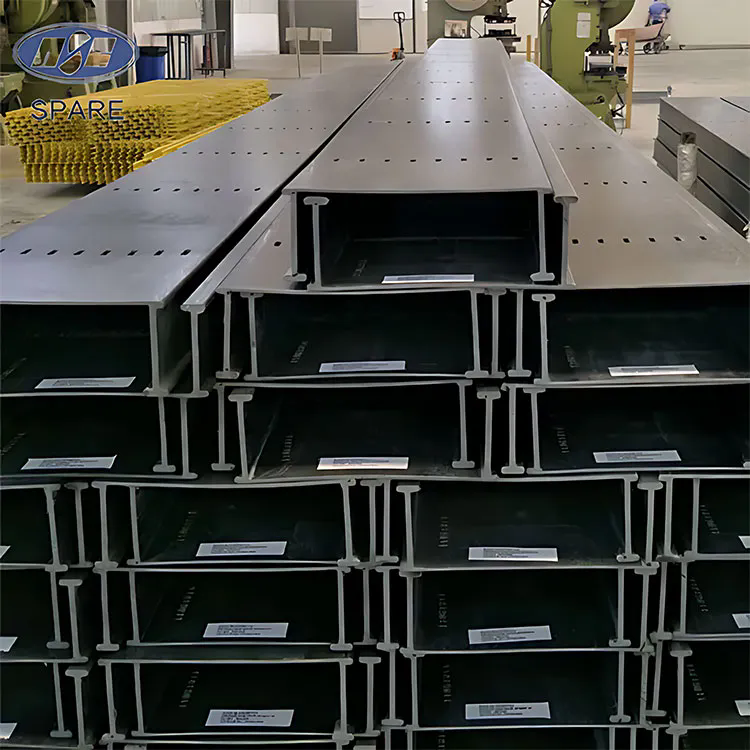Why Are Custom Pultrusion Shapes Becoming Essential in Modern Manufacturing?
2024-12-24
In the world of manufacturing, customization is key to creating efficient, functional, and durable products. When it comes to composite materials, one process that stands out is pultrusion. The ability to create custom pultrusion shapes has revolutionized various industries, providing tailored solutions that meet specific requirements. But why are custom pultrusion shapes becoming essential in modern manufacturing? Let's take a closer look at this innovative process and why it’s so important.
What is Pultrusion and How Does It Work?
Pultrusion is a continuous molding process used to manufacture composite materials, particularly reinforced polymers. During this process, fibers (such as glass, carbon, or aramid) are impregnated with resin and then pulled through a heated die. As the fibers pass through the die, the resin cures and hardens, resulting in a strong and durable material.
This process allows manufacturers to create long, straight parts of various shapes, including rods, beams, tubes, and custom profiles. Custom pultrusion shapes refer to any unique or specialized cross-sectional profiles that are specifically designed to meet the requirements of the customer or application.
Why Are Custom Pultrusion Shapes Important?
1. Tailored to Specific Applications
One of the main advantages of custom pultrusion shapes is that they can be designed for specific applications. For example, industries such as construction, automotive, aerospace, and telecommunications often have unique needs when it comes to material properties and dimensions. By customizing the shape of the pultruded part, manufacturers can ensure that it meets the exact specifications required for optimal performance and functionality.
Custom shapes enable companies to avoid using generic, off-the-shelf solutions that may not fit their needs perfectly, which can lead to inefficiencies, increased costs, and suboptimal product performance.
2. Improved Structural Integrity
Custom shapes allow manufacturers to optimize the design of their products for better strength and durability. By tailoring the shape to the specific stresses the part will encounter, it's possible to enhance its structural integrity. For example, custom pultrusion shapes can be designed to offer better load-bearing capacity, more resistance to environmental factors, and improved flexibility, depending on the needs of the end-use application.
3. Cost Efficiency
When creating parts with custom pultrusion shapes, manufacturers can reduce material waste and improve the overall efficiency of their production processes. Since the parts are made to exact specifications, there is less need for further modification or secondary operations, reducing labor and material costs. Additionally, custom shapes can help minimize the need for stockpiling a variety of different profiles, which helps keep inventory costs low.
4. Enhanced Performance
Custom pultrusion shapes can be optimized for specific performance characteristics such as lightweight design, resistance to chemicals, or thermal stability. For example, in the construction industry, custom pultruded shapes can be made to withstand extreme weather conditions, while in the automotive industry, they can be designed to reduce the overall weight of a vehicle without compromising strength or safety.
By tailoring the shapes to the specific demands of a project, manufacturers can deliver a product that performs better and lasts longer, ultimately improving the end-user experience.
5. Sustainability and Eco-Friendliness
Many industries are shifting toward more sustainable practices, and custom pultrusion shapes play a role in this movement. The process itself is highly efficient, and pultruded parts are often lightweight and durable, leading to reduced environmental impact over time. Additionally, the composite materials used in pultrusion are recyclable, contributing to the growing focus on sustainability in manufacturing.
6. Design Flexibility
Custom pultrusion shapes offer incredible flexibility in terms of design. Whether you need a simple rectangular shape, a more complex profile, or even a multi-dimensional form, the pultrusion process can accommodate various designs. This flexibility allows manufacturers to meet the precise aesthetic and functional needs of a project, which is particularly important in industries like architecture and consumer goods.
Industries Benefiting from Custom Pultrusion Shapes
1. Construction
In the construction industry, custom pultrusion shapes are often used for structural elements, such as beams, columns, and framing components. These parts must be strong enough to support weight and withstand environmental stressors. Custom pultrusions allow for precise control over material strength, load capacity, and durability.
2. Aerospace and Aviation
In aerospace, the need for lightweight yet strong materials is paramount. Custom pultrusions can be used for aircraft components, providing high strength-to-weight ratios that help improve fuel efficiency and reduce overall weight. This is critical for maintaining performance while adhering to strict safety standards.
3. Automotive
The automotive industry benefits from custom pultrusion shapes in the form of lightweight, durable parts used in vehicles, including body panels, frames, and structural components. These custom parts help reduce vehicle weight, improving fuel efficiency and overall performance without compromising safety.
4. Telecommunications
In the telecommunications sector, custom pultrusion shapes are often used to create poles, posts, and enclosures. These parts are designed to withstand extreme environmental conditions, providing durability and reliability for communication networks.
5. Marine
The marine industry uses custom pultruded shapes for boat hulls, decks, and other structural components. Pultruded parts are corrosion-resistant and lightweight, making them ideal for use in harsh marine environments where durability is essential.
Challenges in Producing Custom Pultrusion Shapes
While the benefits of custom pultrusion shapes are clear, there are some challenges to consider:
1. Initial Design Complexity
Custom shapes often require detailed and complex design work to ensure that the part will perform as expected. This may involve working closely with engineers and designers to optimize the part's geometry, material selection, and performance criteria.
2. Longer Lead Times
Custom parts typically require longer lead times for design, prototyping, and manufacturing. While this is often necessary to meet the specific requirements of a project, it can delay the overall production timeline.
3. Tooling Costs
Creating custom pultrusion shapes may require specialized tooling, which can increase upfront costs. However, these costs can be offset over time by the efficiency and cost savings gained from the customization.
Conclusion
Custom pultrusion shapes are becoming essential in modern manufacturing for a variety of reasons. From offering tailored solutions that meet the specific needs of industries like construction, aerospace, and automotive to enhancing product performance and durability, custom pultrusions are changing the way products are designed and produced. As industries continue to push for more efficient, lightweight, and durable materials, the importance of custom pultrusion shapes will only continue to grow.



